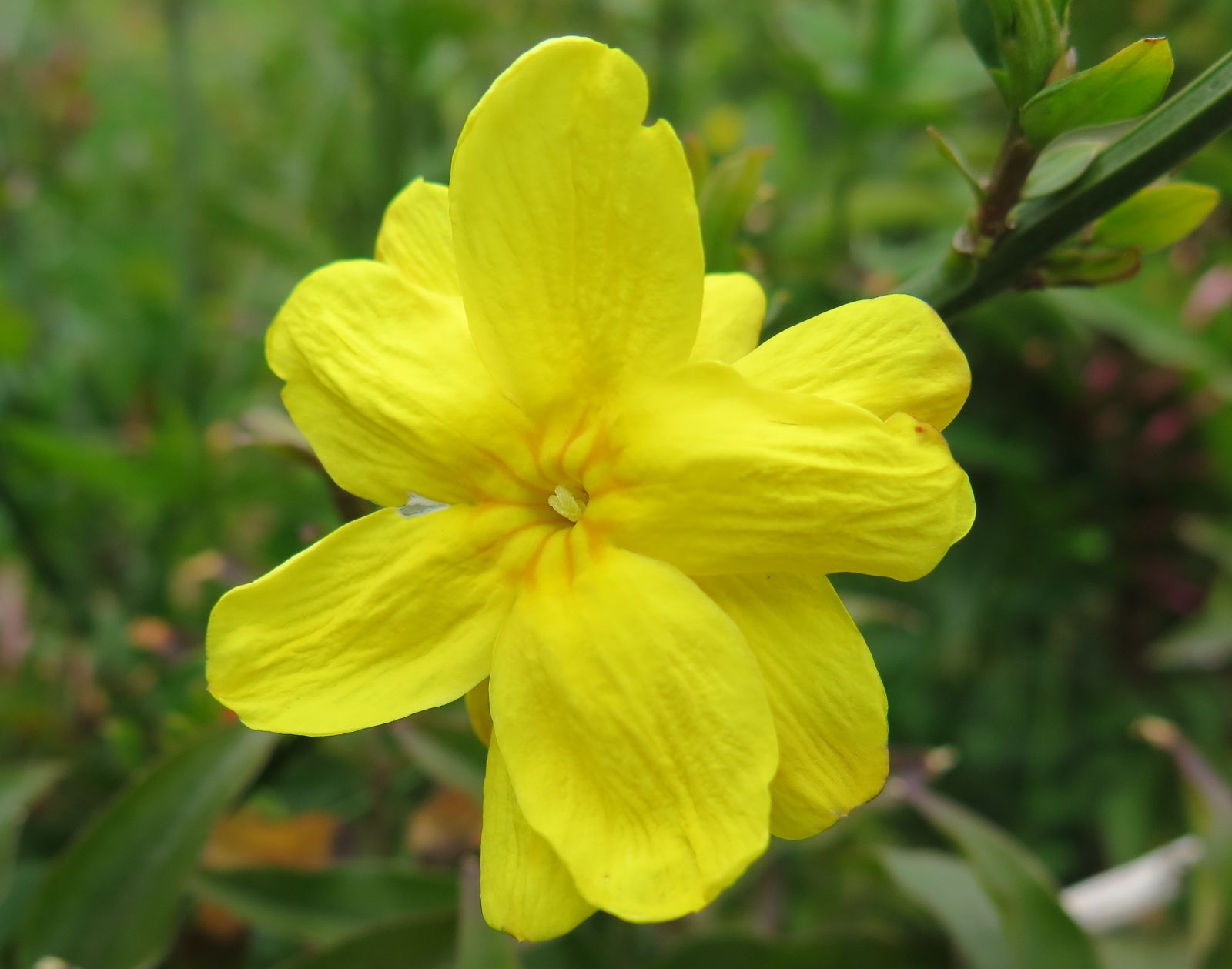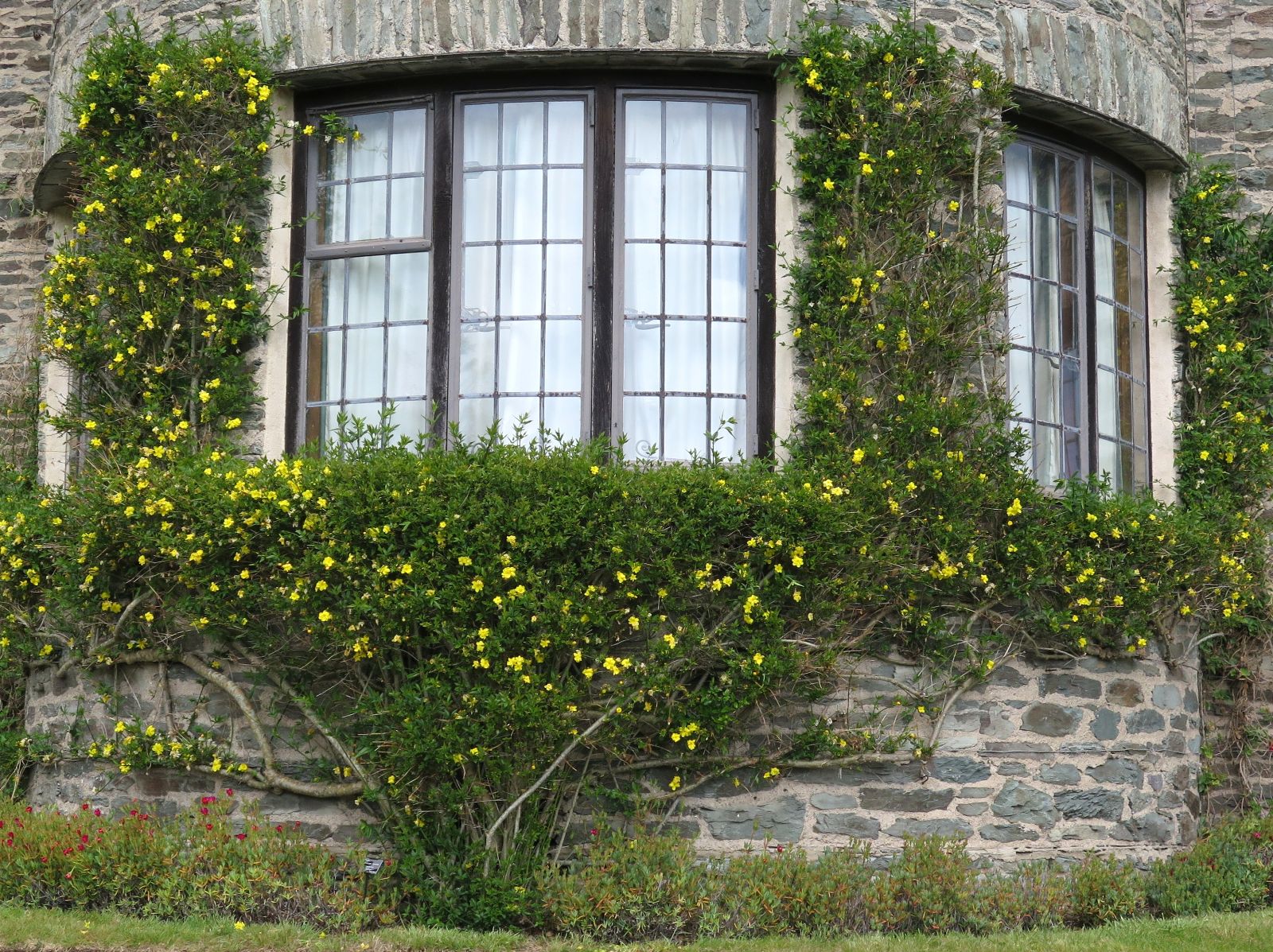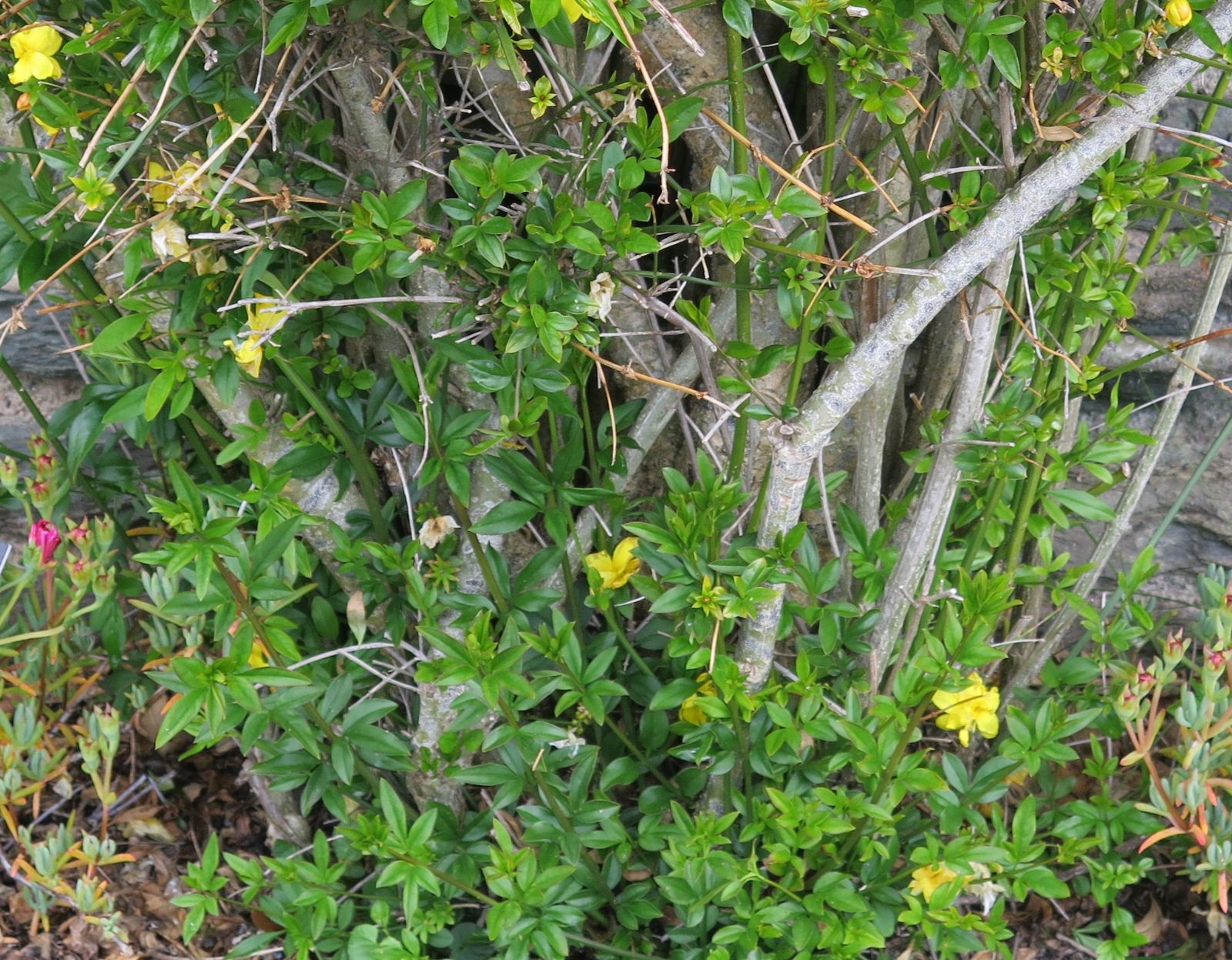Jasminum mesnyi
Credits
Article from Bean's Trees and Shrubs Hardy in the British Isles
Recommended citation
'Jasminum mesnyi' from the website Trees and Shrubs Online (treesandshrubsonline.
An evergreen, rambling shrub probably 6 to 10 ft high, forming a dense interlacing mass of branches; young stems four-angled, glabrous. Leaves opposite, composed of three leaflets borne on a common stalk about 1⁄3 in. long; leaflets lance-shaped or narrowly oval, 1 to 3 in. long, 1⁄3 to 3⁄4 in. wide, short-stalked (the side ones smaller), dark glossy green. Flowers 11⁄2 to 13⁄4 in. diameter, bright yellow, produced in spring and summer, solitary on stalks 1⁄2 to 11⁄2 in. long, and furnished with tiny, green, leaflike bracts. Corolla often semi-double, composed of from six to ten divisions, each 1⁄3 to 1⁄2 in. wide, rounded at the end. Calyx-lobes usually five or six, narrow, pointed, 1⁄4 in. long, glabrous or minutely ciliate. Bot. Mag., t. 7981.
Native of W. China; introduced by Wilson for Messrs Veitch in 1900. As the plant had never been found bearing seed, the collector was obliged to send home living plants by an overland route to Hong Kong, and thence to England. This jasmine is certainly the most striking of all those that can be grown out- of-doors anywhere in this country, but it is only likely to thrive in the very mildest spots. At Kew, even against a wall, it succumbs to severe frost. The best method of cultivating it is, apparently, to grow it in pots out-of-doors, exposed to full sunshine and generously treated at the root, then to house it and keep it as dry as possible without losing its foliage during the winter. It then makes a fine display in spring. It appears to have found acceptable conditions in middle and south Italy, where it flowers profusely. It is closely allied to J. nudiflorum in all essential characters, but is much larger in all its parts, and flowers later.



